Key takeaways:
- Effective CTAs should evoke emotion and create a personal connection, transforming them into invitations rather than just buttons.
- Placement and wording significantly influence user engagement; strategic positioning can convert passive visitors into active participants.
- Testing different CTAs through A/B testing and analyzing user behavior helps optimize effectiveness and improves engagement metrics.
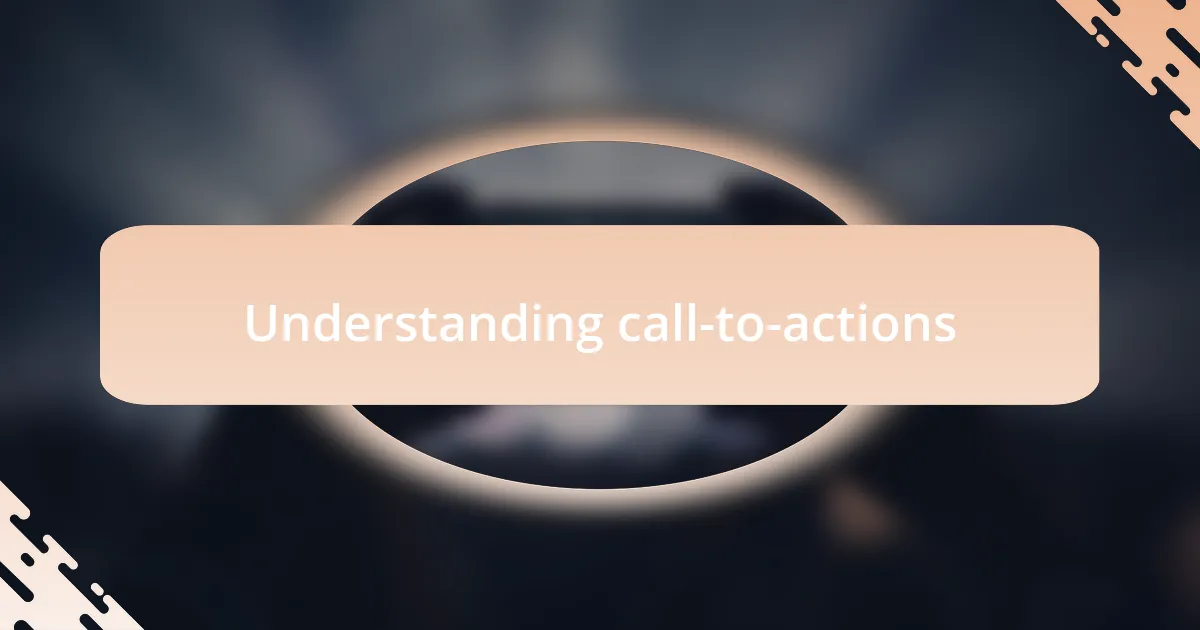
Understanding call-to-actions
Call-to-actions (CTAs) serve as powerful connectors between your audience and the actions you want them to take. I remember a time when I first experimented with a simple “Listen Now” button on a promotion page. The increase in engagement felt almost tangible, as if I was inviting fans into an exclusive space right from the homepage.
When crafting CTAs, think of them not just as buttons or links, but as invitations that stir emotion. Have you ever hesitated to click on a CTA because it didn’t resonate with you? I certainly have. That’s why I strive to use language that feels personal and urgent, like “Join our journey” or “Discover the sound that moves us” — phrases that create a connection and evoke curiosity.
It’s fascinating how the placement of CTAs can influence a visitor’s decision. I once placed a “Get Tickets” button at the end of a heartfelt story about our band’s journey. The response was overwhelming. This experience taught me that integrating calls to action with an engaging narrative can lead to meaningful results, making the audience feel part of something special.
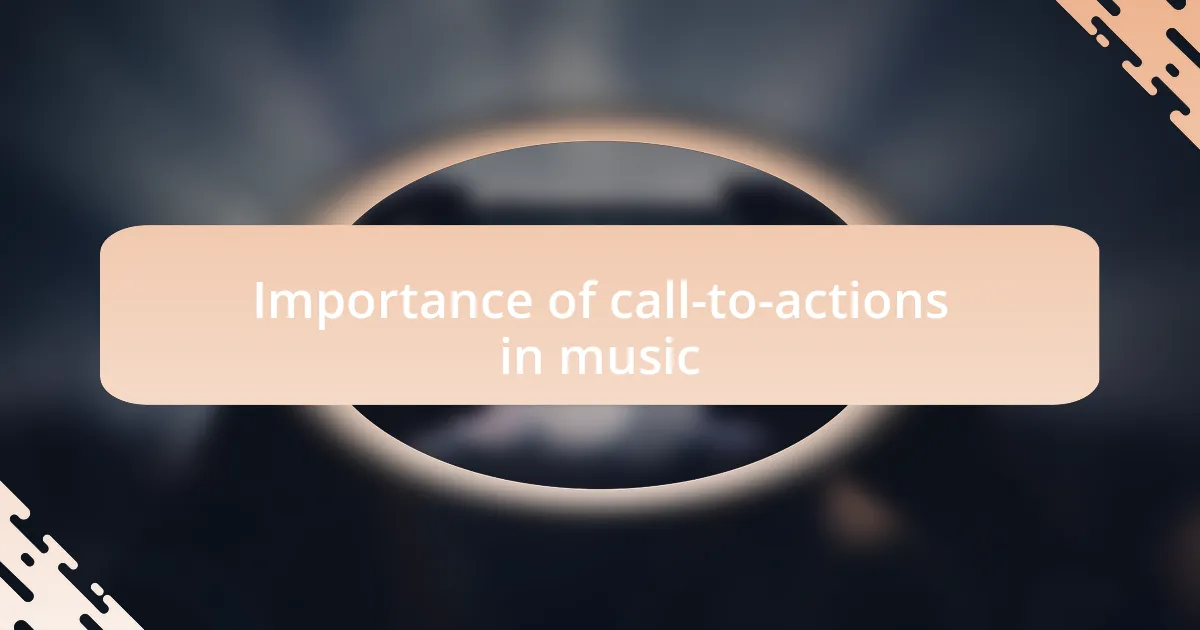
Importance of call-to-actions in music
Call-to-actions play a pivotal role in the music industry, driving not just engagement but also a sense of urgency among fans. I recall when I strategically introduced a “Stream Our New Album” button on our social media pages. The excitement was palpable, and I could see the immediate response—messages from fans eager to hear the new tracks. It solidified for me how a well-placed CTA can transform interest into action.
When fans encounter a compelling call-to-action, it feels like a personal invitation to connect. I often think about the difference between a generic “Buy Tickets” and something like “Be Part of Our Story—Grab Your Tickets Now!” The latter resonates on a deeper level, creating a sense of community. Isn’t it amazing how a few choice words can change the entire energy around an event or release?
Moreover, CTAs bridge the gap between passive listening and active participation from fans. For instance, I once ran a campaign encouraging fans to vote for our first single’s release. The influx of votes not only energized our fan base but also gave them a stake in our journey. This experience reinforced my belief that effective calls to action empower fans, making them feel like essential partners in our musical venture.

Types of call-to-actions for bands
When promoting a band, different types of call-to-actions can cater to various fan engagement strategies. One of my favorites is the “Join Our Mailing List” prompt. I remember when I integrated this into our website—it allowed us to connect directly with our most dedicated listeners. This personal touch is invaluable; it feels like inviting fans into an exclusive club, making them feel appreciated and important.
Then there’s the classic “Follow Us on Social Media.” I consistently remind our followers why staying connected is essential. I recall launching a campaign where our social media followers got exclusive behind-the-scenes content. The response was fantastic. Fans love feeling like insiders, and this kind of CTA not only boosts our follower count but also fosters a deeper relationship with them. Have you noticed how often fans engage when they see they have access to something others don’t?
Lastly, I often use event-specific CTAs, like “Get Your Tickets Now Before They Sell Out!” This creates urgency and excitement. When we were gearing up for a local show, I utilized this prompt on every platform. The tickets vanished in a flash! I learned firsthand that evoking a sense of immediacy can ignite action, urging fans to make swift decisions that enhance their connection with our music.
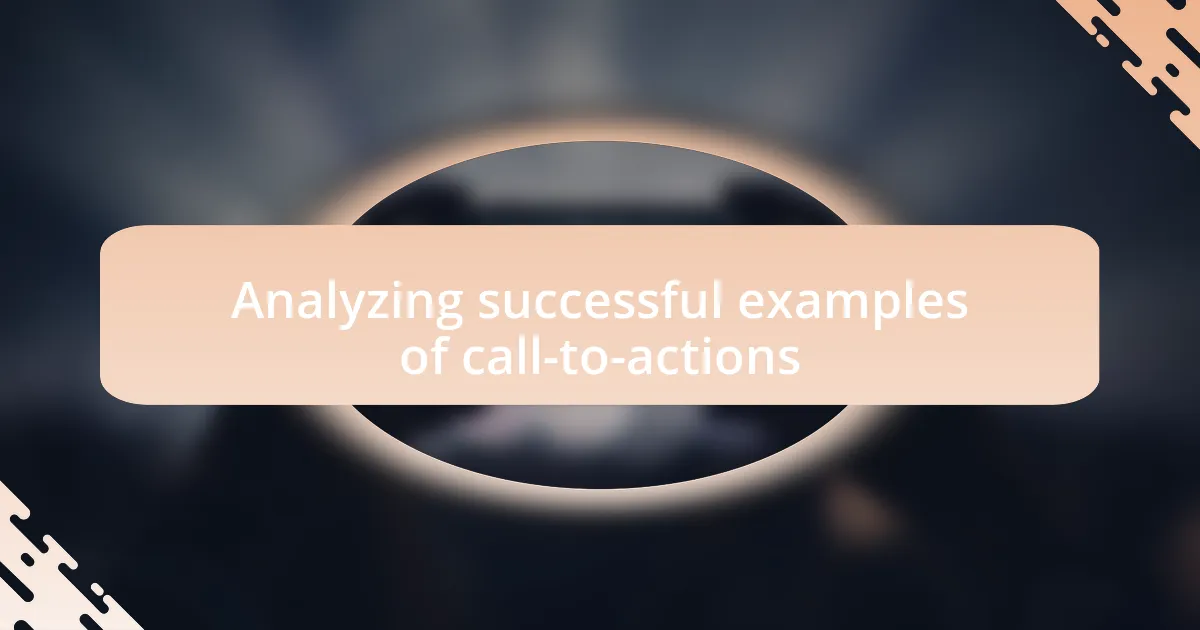
Analyzing successful examples of call-to-actions
I find that analyzing successful examples of call-to-actions can reveal the nuances that truly engage audiences. For instance, I once came across a band that used “Listen to Our Latest Single” as a pivotal button on their homepage. The way they highlighted the track’s story drew me in; it felt like a personal invitation to experience more than just music. This stirred curiosity and reminded me of the power of storytelling in CTAs.
Another notable example is a band that encouraged fans with “Share Your Favorite Memory With Us.” This CTA fostered community interaction and made listeners feel valued beyond just ticket purchases. I vividly remember one fan sharing an emotional story about how a song got them through tough times. It struck a chord not only with the band but also with others who resonated with that experience. Direct engagement like this strengthens the bond between artists and listeners, don’t you think?
Furthermore, I’ve seen bands nail the “Pre-Save Our Upcoming Album” tactic flawlessly. When a local group I admire implemented this, they strategically tapped into fan anticipation. I clicked on it myself, driven by the excitement of being part of something before its release. It felt exclusive and rewarding, making me more invested than ever. Doesn’t that just illustrate how effective CTAs can turn casual listeners into dedicated fans?

Creating impactful call-to-actions
Creating impactful call-to-actions requires an understanding of what truly resonates with your audience. I remember a time when a band I supported used “Join Our Exclusive Fan Club” as a CTA. This simple yet powerful phrase evoked a sense of belonging, making me feel like I was part of something special. It made me reflect on my own desire for community within the music scene. Don’t you feel that urgency when you know there’s a unique opportunity waiting just for you?
Additionally, the wording used in a CTA can dramatically alter its effectiveness. I once came across a CTA that said, “Get Your VIP Access Now!” The urgency and exclusivity of that phrase compelled me to act immediately. I was transported back to my excitement when I got front-row tickets to a concert—how those moments create lasting memories. Isn’t it fascinating how a well-crafted phrase can tap into our emotions and spur us into action?
Moreover, timing plays a crucial role in creating impactful CTAs. I’ve observed that when a band promotes a limited-time offer—like “Buy Tickets Before They Sell Out”—it instills a sense of urgency that grabs attention. I recall a situation where I almost missed out on seeing a band live due to procrastination. After that experience, I realized that a strong call-to-action not only prompts action but can also ignite a fear of missing out, pushing fans to engage more deeply. Isn’t it incredible how effectively designed CTAs can shape our choices?
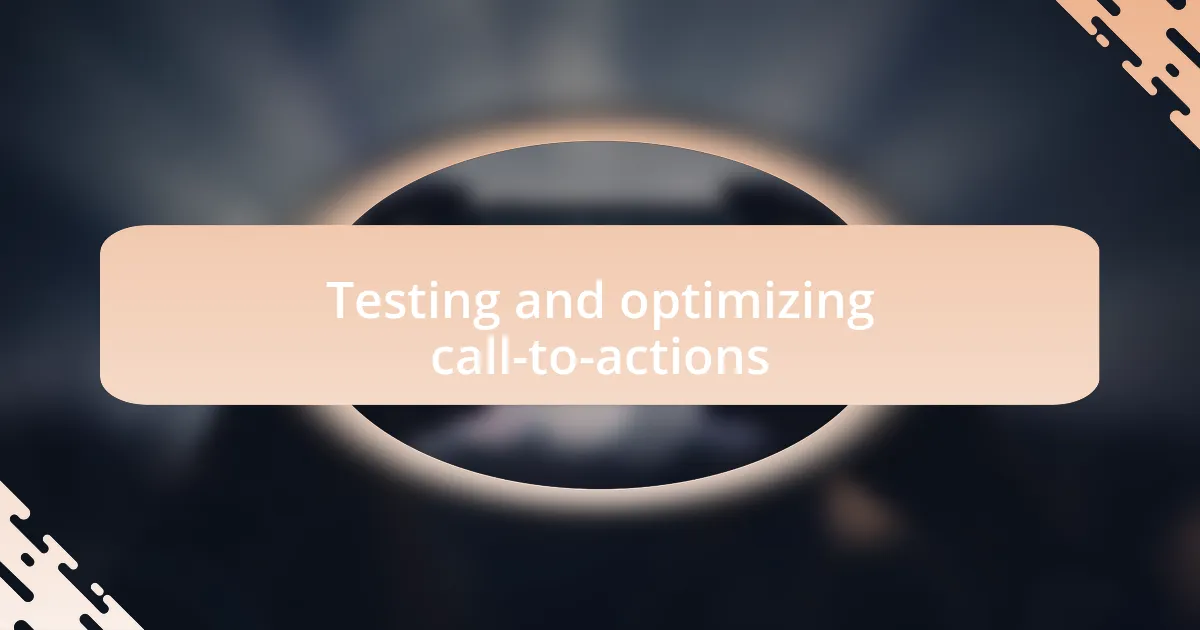
Testing and optimizing call-to-actions
Testing and optimizing call-to-actions is essential for ensuring they resonate with your audience effectively. I remember running an A/B test on a CTA for a friend’s band, where one version simply invited visitors to “Listen Now” while the other urged them to “Discover the Latest Hits.” The difference in engagement was staggering; the latter felt more inviting. Have you ever noticed how a slight change in phrasing can draw you in?
Moving beyond wording, I’ve learned the power of placement through trial and error. When we shifted a prominent CTA from the bottom of a page to the top, it led to a noticeable spike in click-through rates. This was particularly eye-opening for me; I realized how minor adjustments could transform a passive visitor into an eager participant. Isn’t it curious how something as simple as location on the page can impact user behavior?
Lastly, analyzing user behavior provides invaluable insights for refinement. I once delved into click heat maps for a band’s promotional site and was surprised to find that certain CTAs hardly got any love. It was a real eye-opener! Adjusting the design and text based on that data increased conversions significantly. Have you ever thought about how closely observing your audience can lead to breakthroughs in your strategies?
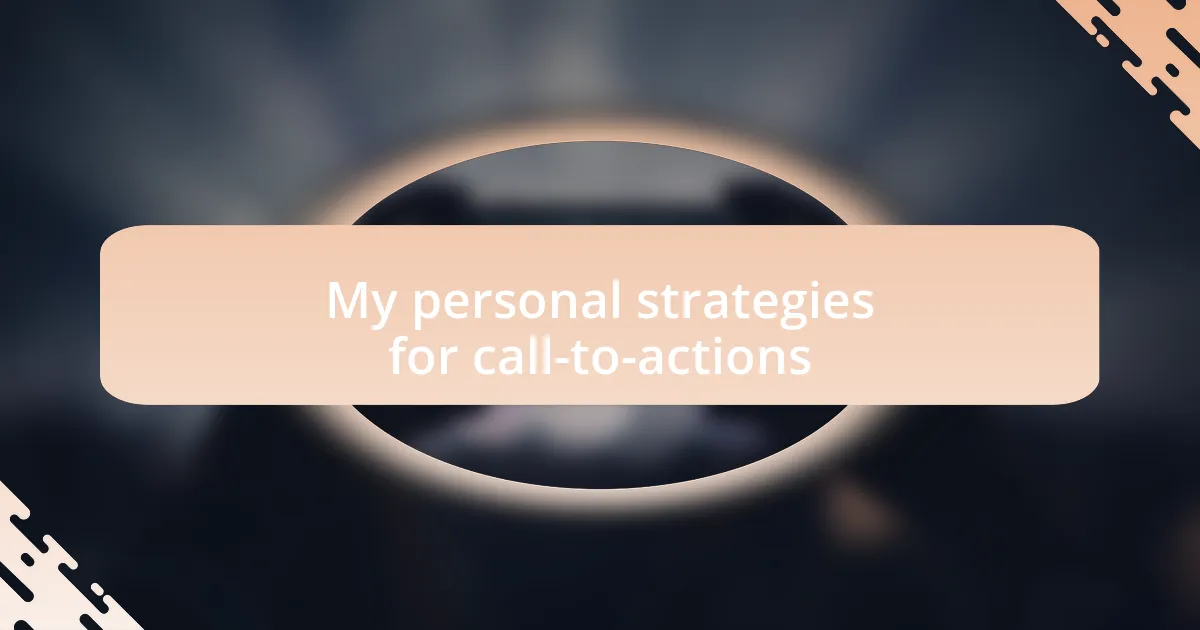
My personal strategies for call-to-actions
One of my go-to strategies for crafting effective call-to-actions is tapping into the emotions of the audience. For instance, when I promoted a local band’s upcoming show, I framed the CTA around the electrifying experience of live music: “Feel the Beat Live!” This emotionally charged appeal not only resonated with potential attendees but also sparked their excitement. Isn’t it fascinating how invoking feelings can transform a simple action request into a compelling invitation?
Another tactic I use involves storytelling within the CTA itself. I remember featuring a band’s new album launch with the call-to-action, “Join us on an unforgettable journey through sound.” This phrasing painted a vivid picture in the minds of listeners, making them feel like they were part of something significant. Have you ever felt drawn to a storyline that made you want to jump in and experience it for yourself?
Lastly, I focus on urgency. During one specific campaign, I implemented a limited-time offer for ticket discounts, highlighted by the CTA, “Grab Your Tickets Before They’re Gone!” I observed an immediate spike in urgency-driven clicks. It made me realize how much the fear of missing out can motivate action. Have you found similar urgency tactics to be effective in your campaigns?